
6 minute read
Process
PROCESS from memory Painting
After a year in lockdown, our visual memories are more important than ever. ROB DUDLEY shares a method that will help you utilise them to create more artistic paintings
Some landscape painters work on location, others from references back in the studio. I have done both over the years. Working en plein air in oils or watercolour, I would essentially paint or draw what was in front of me. I would then take these notes and sketches back to the studio and develop them into more “finished” pieces. For many years this has been my process when painting the landscape and I’ve had very little reason for it to change as it had served me well.
Recently, I learnt of an artist who had a very different approach to landscape painting. He began much as I did: working on location, sketchbook and camera in hand, before returning to the studio armed with numerous photos and sketches. The difference being that he would then put these reference materials away in a drawer and proceed to make a painting without looking at them. The studio painting process would rely instead on his memory and experience of the location.
The reasoning behind this approach was that his memory would, to a large part, inform what the painting would be about. It acted like a filter, sifting out all unnecessary elements and leaving only the strongest as a basis for the painting. This approach was very different to my own but one that lockdown gave me the perfect opportunity to try.
I was less stringent though. I decided to work from my memory of the location for as long as I could, at least until the plan for the painting was almost complete. Only then would I refer back to sketches – and only if I deemed it essential to the painting’s progression. Otherwise, I was more than happy to paint without them.
If you look at the following case studies and compare my final “memory” paintings with the photos of the actual locations, you’ll see they are similar yet lacking topographical accuracy. However, as artist friends have suggested, the paintings seem to be more concerned with the spirit of the location and I find that to be most encouraging.
While painting from memory might seem tricky, I would suggest that it is beneficial on a number of levels to all artists, regardless of experience. It can sharpen the visual memory and also help you filter out unwanted or unnecessary elements of a composition in the process, allowing you to produce more artistic results. www.moortoseaarts.co.uk

Final painting
Location sketch
Original scene
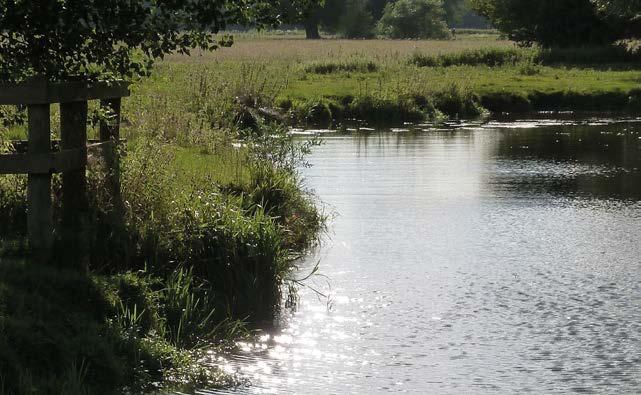
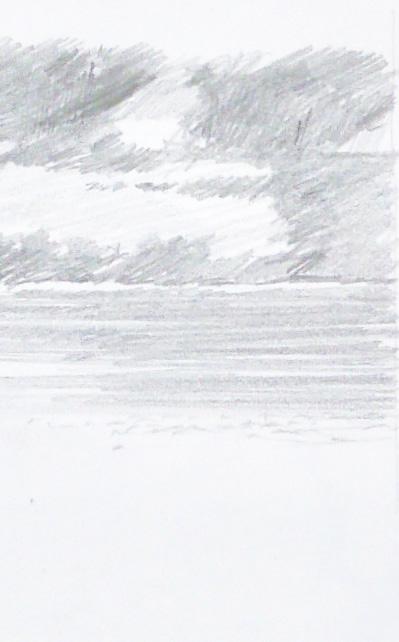


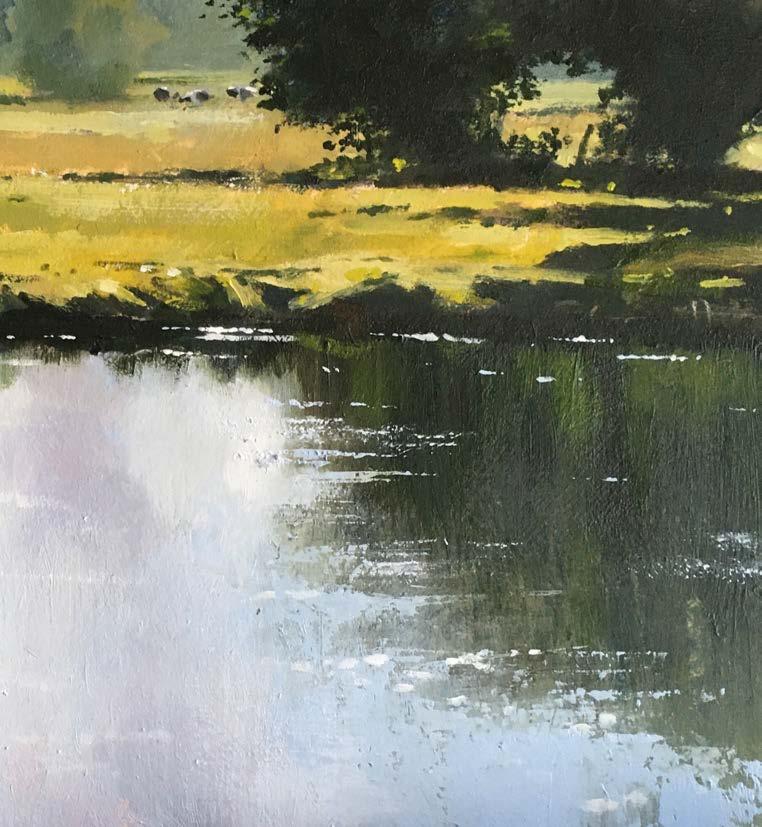
Case study 1
The Stour near Dedham, oil on board, 30x18cm
The Stour near Dedham was inspired by an afternoon at Flatford Mill in Suffolk. I took a few photos and made some drawings of the river and fields. I also made sure I committed to memory many of the things that I had noticed while out walking that afternoon.
Back home in Devon, I set about planning a painting. I produced a number of small drawings, focusing on my memories of that afternoon and trying to distil the essence of a summer walk by a rather beautiful river. I found it to be quite freeing to draw without the sketches or photos in front of me. The lack of reference allowed me to concentrate on what the scene was about; how I felt towards it became as important as how it looked.
It was only with planning underway that I began to refer back to my sketches and notes. Notice how the location drawing and final painting are similar in some respects – and quite different in others. For instance, I failed to include the fence and the cattle turned out to be geese! However, the painting more closely resembled the mood I wanted to convey, so I was satisfied with the outcome.
Memory sketch
Case study 2
Mist on the Marsh, oil on board, 30x20cm
This very simple oil study was the result of a visit to a rather misty bird reserve in south Devon. An atmospheric scene such as this is almost perfectly suited to this process of painting from memory, particularly as the light was changing so quickly. After a few hurried sketches and photos, I retreated to the studio to make a painting.
When comparing the location work to the finished memory painting, notice how I simplified the complex tree shapes in the distance and the grasses in the fore- and mid-grounds, concentrating much more on their overall shape rather than fussing over the detail. I also clearly remembered the near pool to be much wider than it was, which helped to lead the eye into the painting, particularly without the fence acting as a barrier.
If you tend to slavishly copy a subject, this method of memory painting can help you get away from that. Even a good memory is selective and so the process forces you into making artistic decisions that will in time improve your practice – and your paintings.
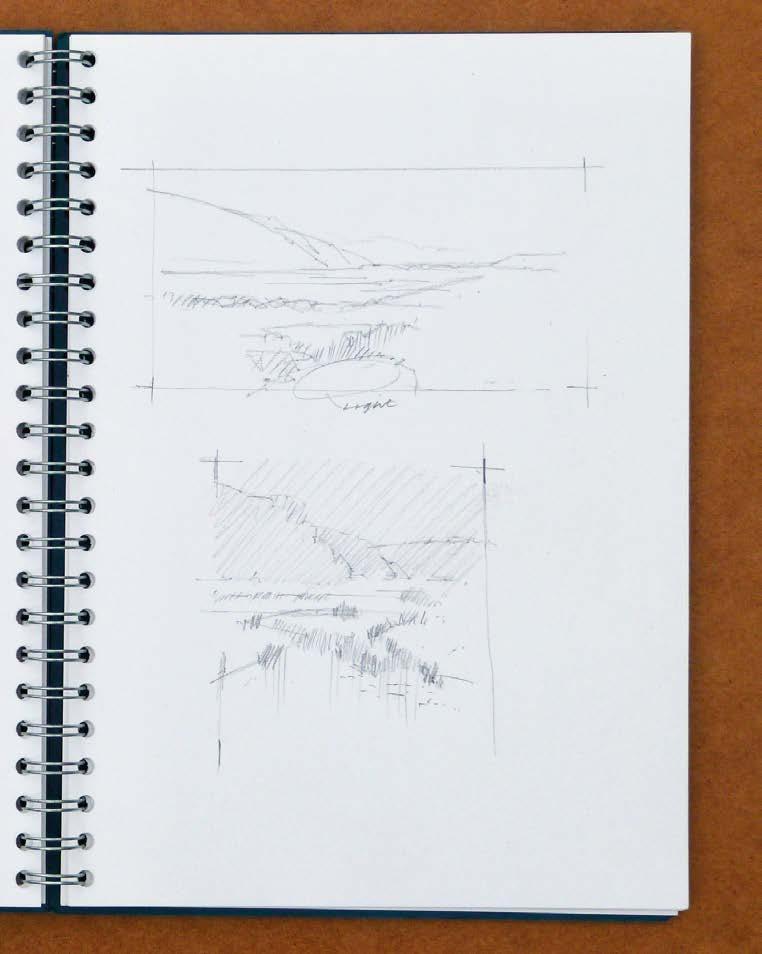
Original scene
Location sketch
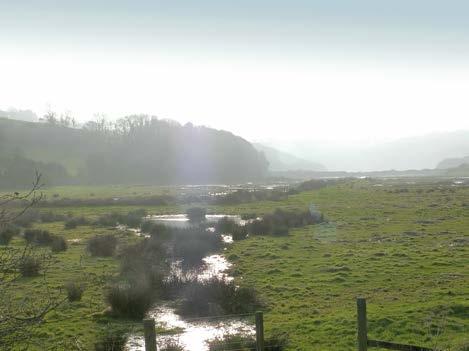
Final painting
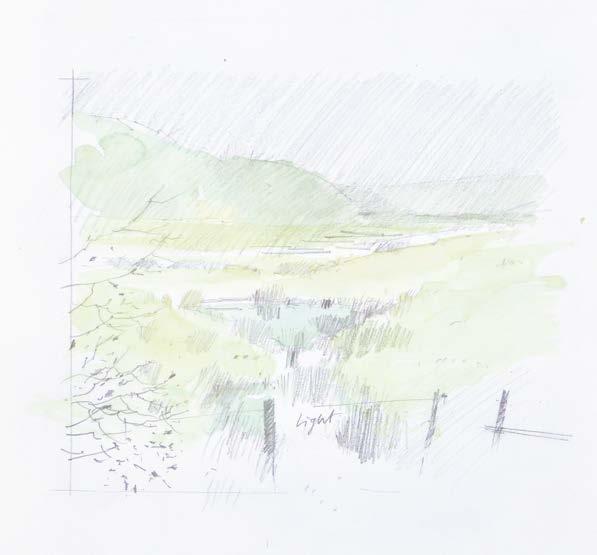
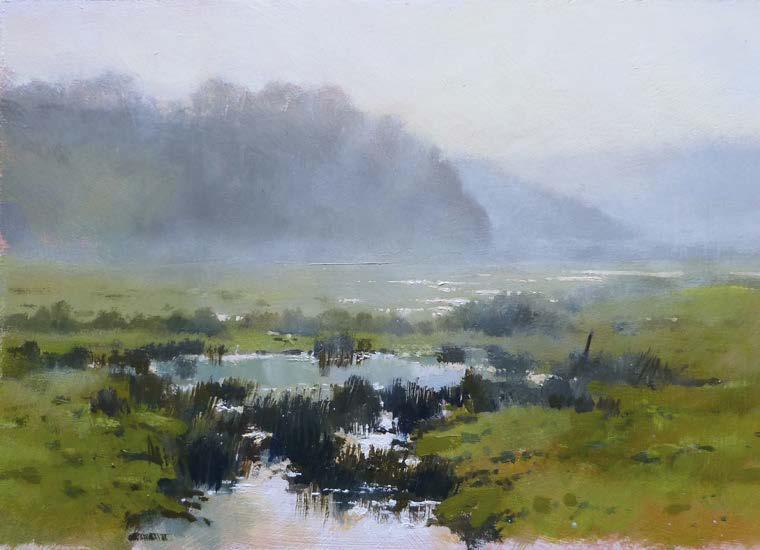

Original scene Location sketch

Memory sketch
Case study 3
Moorland Stream, Harford, watercolour on paper, 22x29cm
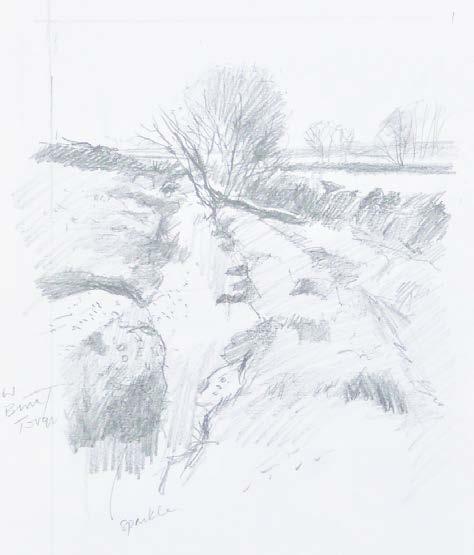
I recently spent the best part of a spring morning walking across the southern parts of Dartmoor. Although I know the area well, I still discover new things. On this occasion a stream that was normally a trickle was more like a small river after heavy rain. I took photos and made sketches, noting the sparkles on the water and the turquoise colours of the granite boulder.
Back in the studio, I drew several small thumbnails to test my composition ideas before making a painting, all from memory. The stream, the boulder and the small tree became the focus of the painting, while the colours were those that I associated most closely with my experience of Dartmoor on a clean and crisp spring morning. This time, I didn’t look at the reference material until the studio painting was finished. I realised I had completely overlooked the fallen tree in the stream. It was in my location drawing, but my memory had filtered it out of the finished watercolour. Perhaps it was for the best as including it would have taken something away from the stream and the bright spring sunlight falling upon it, making this a very different painting.

Final painting










